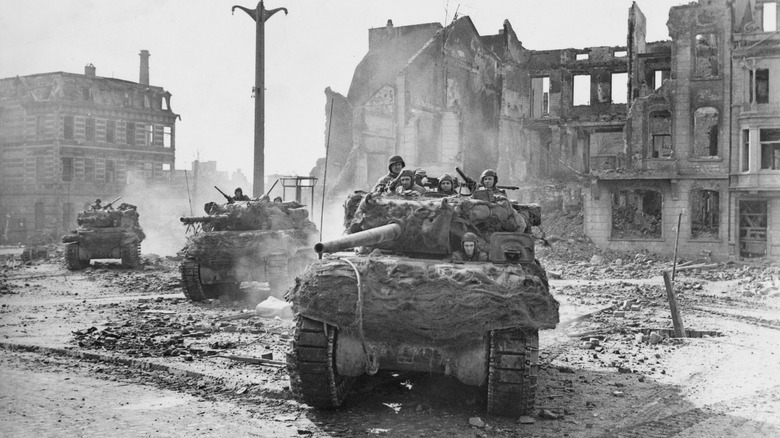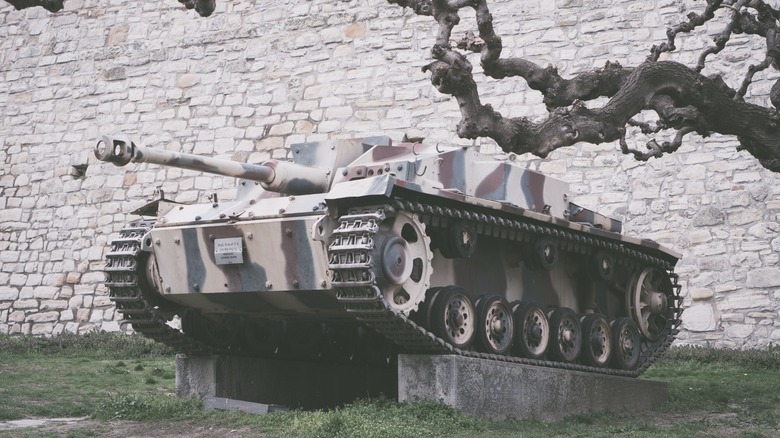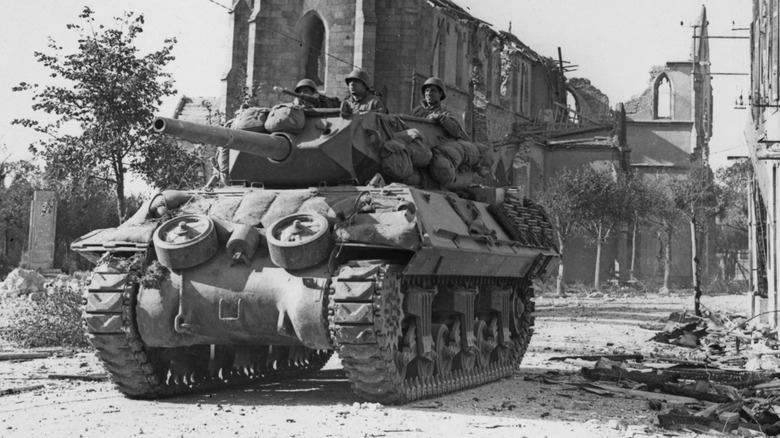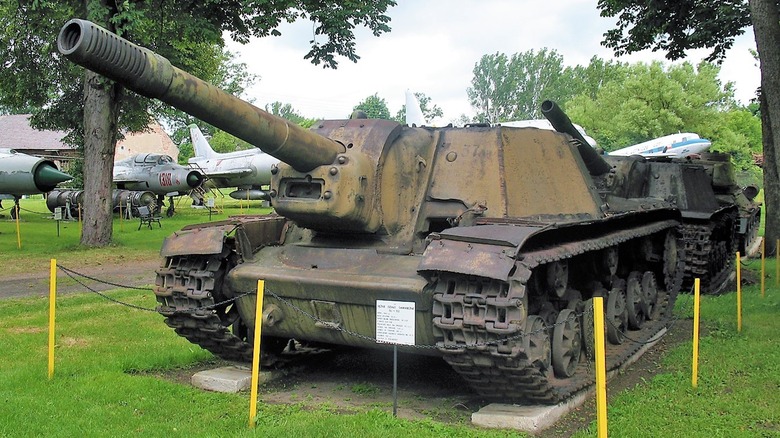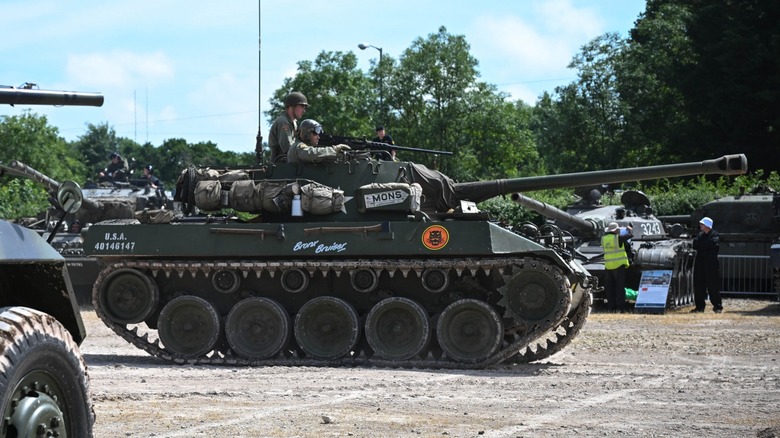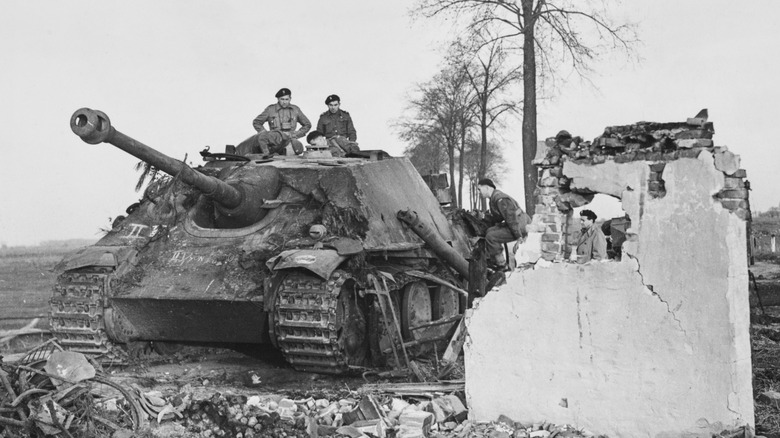5 Of The Best Tank Destroyers Of WW2
Tanks were usually involved in any invasion in the European theatre during World War II. The German Panzer Is and IIs spearheaded the invasion of Poland, while the later Panzer IIIs and IVs were used against France and the Soviet Union in 1940. On the other end of the spectrum, the Soviets used massive numbers of T-34s and KV-1s to overwhelm the Germans starting in 1943 at the Battle of Kursk, while the Allied landings at Normandy had several M4 Shermans.
Although the Tigers and the Shermans are what we most often see in movies and hear in war stories like these, we should not forget the armored vehicle they feared — the tank destroyer.
These armored vehicles were designed to destroy tanks and favor firepower over other attributes like mobility, protection, or even a turret. Although they may not look as scary or impressive as their prey, many tank crews were caught unaware and had their giant, expensive metal beasts turned into scrap metal by these tank destroyers.
StuG III
If you've seen several World War II movies and shows, you've probably heard an Allied soldier shouting, "StuG!" That's because the StuG III, or Sturmgeschütz III (literally translating to Assault Gun III in English), was the most produced German armored fighting vehicle in the war, with over 9,500 examples built.
The StuG III was built on a Panzer III chassis and started life as an assault gun for supporting infantry. However, the shock of meeting T-34s and KV-1s during the German invasion of Russia led to the development of anti-tank variants, which culminated with the StuG III Ausf. G.
These up-gunned StuGs had a 7.5 centimeters StuK 40 L/48 anti-tank gun, capable of defeating 96 millimeters of armor with a 30-degree incline at 500 meters. This is enough to penetrate the front armor of the M4 Sherman, T-34, and even the KV-1. And because of its ubiquity, the StuG III (and its later variants) continued serving on the front lines until the war's end. Other countries also acquired StuGs after World War II, with Romania, Norway, Syria, and Yugoslavia retiring them in the 1950s.
M10 Tank Destroyer
America's tank doctrine in World War II did not call for tank-on-tank battles. Instead, it reserved tanks for exploiting gaps in enemy defenses and wreaking havoc in their rear. On the other hand, tank destroyers were expected to face enemy armor and stop their spearhead dead in its tracks. While this was a flawed doctrine and wasn't implemented in the field, it did allow the U.S. to field an excellent tank destroyer with the M10.
Formally called the 3-inch Gun Motor Carriage M10, this tank destroyer was based on the chassis of the M4 Sherman while mounting the 3-inch or 76.2-millimeter gun M7 in an open-top turret. Although the M10's chassis is based on the Sherman, it had thinner, albeit heavily sloped, armor. Combined with its open-turret design, the M10 has much less protection than its contemporaries.
Nevertheless, this wasn't an issue, as the M10 traded armor for firepower and mobility. The M4 Sherman had an average power-to-weight ratio of 11.96 hp per ton, while the M10 has a much better 12.68 hp per ton for its initial variant and 15.5 hp per ton for the later M10A1 versions. This means the M10 can use its superior speed and mobility to avoid enemy tanks and take up positions ahead to set up an ambush from a protected position.
SU-152
The Soviets discovered they needed a mobile heavy gun to dislodge the Germans during the Stalingrad counteroffensive. While they could use artillery guns to engage enemy fortifications directly, these unarmored units were often vulnerable to enemy counterfire and were slow to position.
Although they already had a vehicle like this in the KV-2, it was slow, lumbering, and had a large turret, making it an easy target. Furthermore, KV-2 production stopped because the Soviets had to move its factories behind the Urals to protect them from the German advance.
So, to fill this need, the Red Army used the chassis of the KV-1S and mounted a 152-millimeter massive howitzer on it, protected by a casemate structure. This gigantic gun allowed it to destroy fixed emplacements and mobile armored targets; thus, its Russian crews gave it the Zveroboy nickname, translating to Beast Slayer in English.
However, as the SU-152 is primarily an assault gun, it usually disables enemy vehicles by knocking out its crew. This meant the damaged tanks only needed minor repairs or new crews and would be back in action the next day. Nevertheless, its cheap cost and easy construction (plus its giant gun) made the SU-152 one of the best tank destroyers of the war, as the Soviets could make so many of them to overwhelm the enemy through sheer numbers.
[Featured image by Maciek Godlewski via Wikimedia Commons | Cropped and scaled | CC BY 2.5]
M18 Hellcat
Although the M10 Tank Destroyer was already lighter than its medium tank counterpart, the M18 Hellcat was even lighter and faster than it. It's also a new design, unlike the M10, which was based on the M4 Sherman.
Like the M10, the Hellcat is thinly armored and has an open-top turret. But it makes up for this with its higher maximum speed — capable of reaching 55 mph on the road and 26 mph in mud. The M18 Hellcat's main armament was a 76mm M1 gun, so this mobile gun platform offered plenty of firepower despite its maneuverability.
But what makes the M18 Hellcat one of the best tank destroyers of World War II is that it had the highest kill-loss ratio of any armored vehicle in the U.S. inventory. It claimed 526 kills worldwide, with only 220 Hellcats lost to enemy action. This equates to 2.4 destroyed enemy vehicles for every destroyed Hellcat.
Jagdpanther
The Tiger and Tiger II tanks were the most formidable tanks in the German armory during World War II. However, they're expensive to make and unreliable to operate in the field. The Germans wanted to create a self-propelled anti-tank weapon based on the same 8.8 cam Pak 43/3 L/71 gun, so they made the heavily armored Ferdinand and the lightly armored Nashorn.
However, both tank destroyers performed poorly, necessitating the Jagdpanther. Based on the Panther medium tank, this tank destroyer had thick frontal and side armor- 80 millimeters at the upper front, 60 millimeters at the lower front, and 50 millimeters at the sides. Furthermore, these armor plates are also highly angled, giving this tank destroyer maximum protection.
But this vehicle stands out because of its powerful gun, which could penetrate virtually any Allied forces fielded tank. Germany made 413 Jagdpanthers from 1944 until VE Day, but it couldn't field enough to change the direction of the war.
These tank destroyers are often forgotten in the annals of history, with only historians, World War II enthusiasts, and gamers remembering them. But we shouldn't disregard these vehicles as minor players in the field—after all, tanks and their crews were afraid of these beasts.
